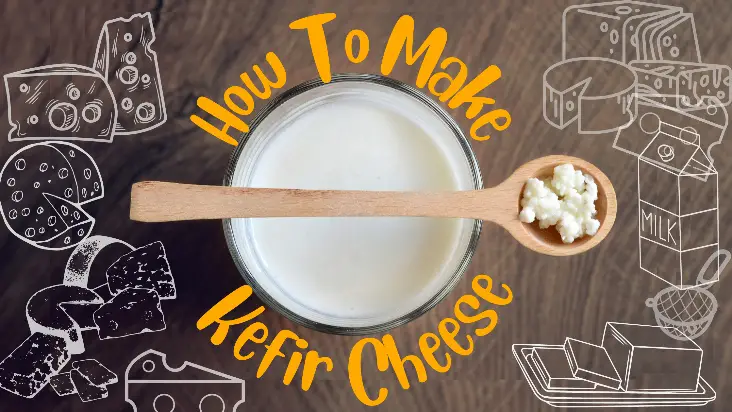Everybody loves cheese. However, behind its salty and creamy taste lies its high-calorie content. If you’re a cheese-lover who tries to lose weight or maintains a specific calorie count per day, learning how to make kefir cheese can be the life hack you’ve been looking for.
Kefir cheese is a fermented dairy product derived from kefir milk. It is considered by many as a healthier option due to its probiotic properties and low fat and calorie content. Compared to the usual salty and creamy texture of cheese, kefir cheese is a bit tangy, making it an ideal substitute for sour cream and cream cheese.
In this post, learn how to make kefir cheese, where to use it, and its health benefits, including whey.
How to make kefir cheese
Kefir cheese is made by separating whey and kefir milk proteins. It is produced by adding two more steps to the kefir milk fermentation which takes around 24 to 30 hours. The foundation of the flavor and texture of your kefir cheese lies in the fermentation of kefir milk. Here’s what you’ll need to make kefir milk:
Ingredients
- Kefir grains.
- 1 quart of cow or goat milk.
- A pinch of salt.
- A pinch of pepper (optional).
Materials
- Strainer.
- Funnel.
- Canning jar.
- Coffee filter.
- Spatula.
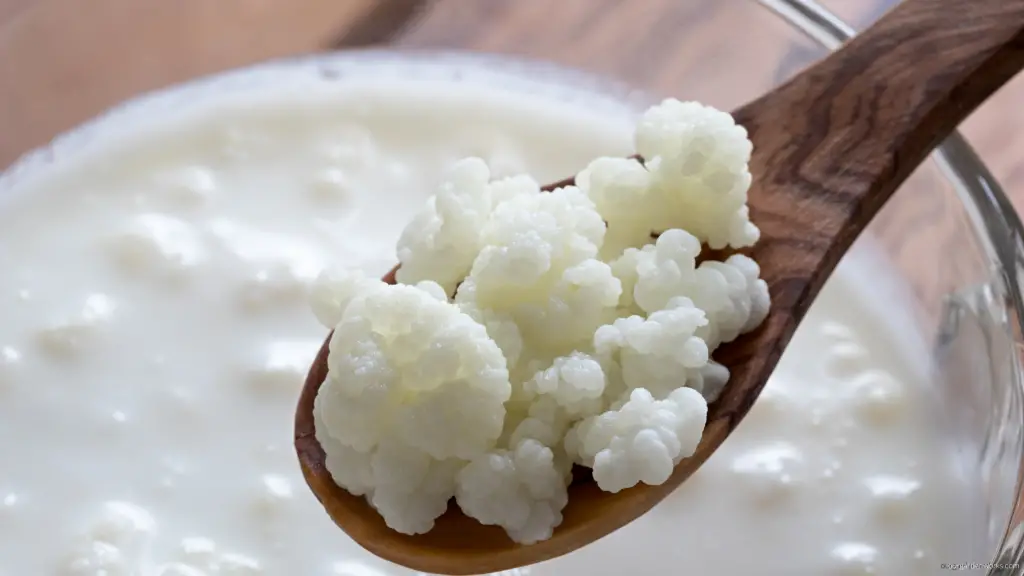
#1 Ferment kefir for 24 hours
Fermenting kefir milk only needs a tablespoon of kefir grains for a quart of milk. Cover the jar with a coffee filter and let it ferment at room temperature (65 F to 85 F). During the fermentation process, the yeast and bacteria from the kefir grains will eat the sugar from the milk, turning them into lactic acid and forming subtle curds.
How do kefir grains ferment milk?
Kefir grains are small lumps of polysaccharide carbohydrates that hold different kinds of kefir bacteria and yeasts. These strains include:
- Lactic acid bacteria (Lactobacillus Lactococcus, and Leuconostoc).
- Yeasts (Kluyveromyces, Candida, Saccharomyces, and Pichia).
- Acetic acid bacteria (Acetobacter).
The bacteria and yeast in kefir grains work hand in hand to keep the milk environment acidic and fight contaminants. The good bacteria produce enzymes that break down lactose, while yeasts produce enzymes that deal with proteins, turning them into amino acids.
When there’s enough acid in the kefir, the casein proteins will be extracted from the milk and form curds. This curd formation in kefir is similar to rennet when added to milk to create mozzarella cheese.
As the kefir grains do their job of keeping the milk environment acidic, it transforms some of the carbohydrates and turns them into kefir grains. What makes kefir a cost-friendly option is its grains will continue to multiply as long as you keep using them to make new batches of kefir.
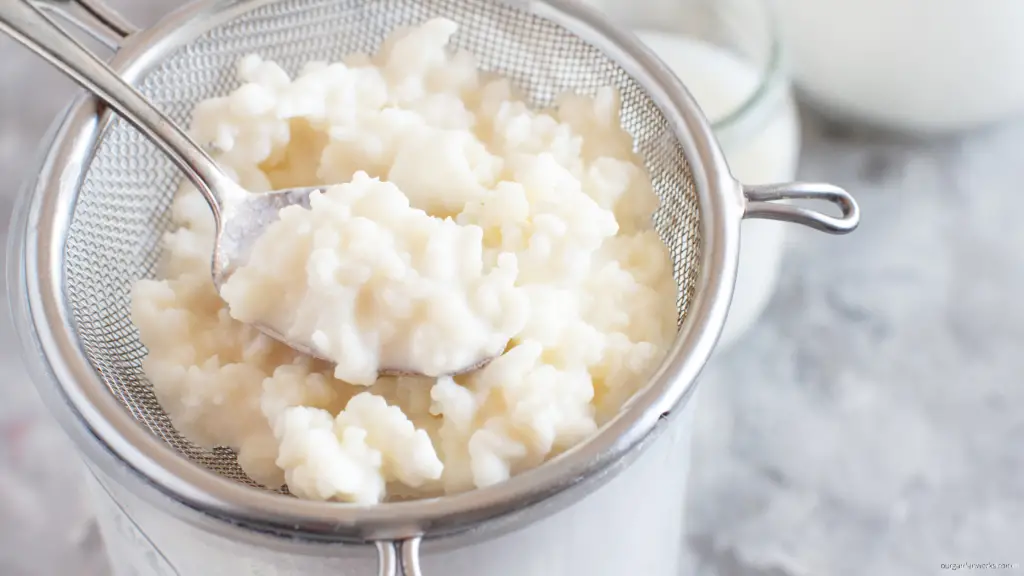
#2 Filter kefir to separate the whey and the milk
There are two straining processes involved in extracting the curds or cheese from the kefir milk. The first one is to separate the kefir grains while the other one is to separate a yellow substance called whey from the milk.
First strain: After 24 hours of fermentation, your kefir milk is ready for straining. Place the strainer over a new jar and slowly pour the kefir. You will notice that the consistency of the milk becomes thicker due to the formation of curds. So, use a spatula to break the curds and continue to pour until the fermentation jar is empty.
Second strain: On a new jar, place a funnel and top it with a coffee filter. It can take a while before the whey gets separated from the milk so you’ll need to leave it straining for two to three hours until all the kefir milk is poured over the coffee filter.

#3 Wait for the cheese to lose excess whey
Let the kefir strain overnight by placing it in the fridge for a creamier texture. On the next day, you will see a yellowish fluid strained on the jar while the kefir on the coffee filter becomes thicker or creamier. The sticky and creamier kefir on the coffee filter is the kefir cheese. You may continue to strain it for a few more hours for a firmer texture.
Then, transfer the kefir cheese to a new jar and season it with spices based on your preferences.
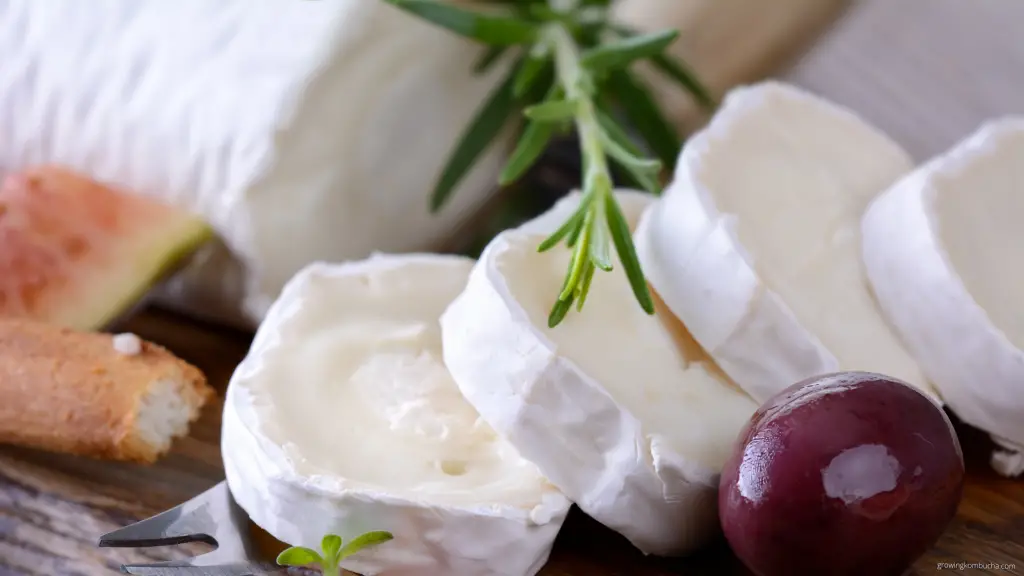
#4 Store your kefir cheese
The most ideal container for kefir cheese is an air-tight glass jar due to its smooth surface. Plastic containers have porous surfaces where bacteria can sneak in and contaminate your kefir cheese, leading to faster spoilage.
The average lifespan of kefir cheese in the fridge is one week. Don’t throw away the whey since it can also be used as a base for soups, smoothies, and pastries. You may also use it to feed your chickens and other poultry animals.
Nutrition & calorie content of kefir cheese
Many people prefer kefir cheese due to its lower calorie and fat content than traditional cheese. Since its base ingredient is kefir, the nutrients and probiotics from the fermented drink are also carried over to the cheese.
For a quick comparison, 30 grams of American cheese contains 111 calories according to the USDA. A 30-gram kefir cheese, on the other hand, contains around 57 calories which is half the amount in a typical cheese. Therefore, it is an ideal option for weight and patients with diabetes and high blood pressure.
Kefir fermentation and the filtration of kefir whey are two of the reasons why kefir has lower calories than typical milk. Kefir whey contains around 30%-40% of the calories which is removed from the kefir cheese. Additionally, the longer you filter the kefir, the creamier it gets.
Aside from its reduced calorie content, kefir cheese is also rich in vitamins and minerals, such as:
- Protein.
- Calcium.
- Phosphorus.
- Vitamin B12.
- Essential amino acids.
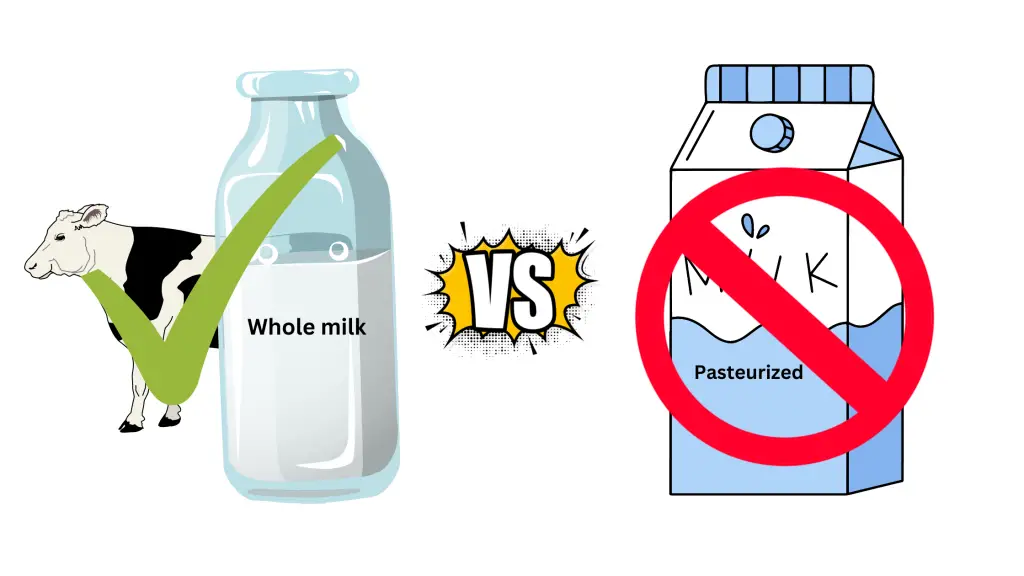
Choosing the right milk for kefir fermentation
There are two factors that you should consider in choosing the best milk to use for your kefir. These factors can affect the fermenting capacity of your kefir grains and the overall calories of your kefir. These include:
- Animal milk vs. pasteurized milk: For best results, use milk from cows, goats, or sheep. Kinds of milk processed in ultra-high temperatures (UHT) or pasteurization are not ideal for kefir fermentation. When milk is pasteurized, the live bacteria in the milk, both good and bad, are killed which is essential in fermentation.
- Full-fat (whole milk) vs. non-fat milk: Kefir grains are more active in these types of milk and will likely provide an optimal kefir fermentation process. Low-fat milk can also be used. However. the kefir grains must be placed in full-fat milk from time to time to activate the kefir grains back to health.
Consecutive use of kefir grains for low-fat kefir fermentation will weaken the kefir grains which will cause them to stop fermenting the milk. When it comes to caloric differences, full-cream milk, and non-fat milk have around a 50% gap when fermented into kefir.
4 Ways to use kefir cheese
Kefir is a very versatile fermented food that you can use in any type of dish. It has a tangy flavor and creamy texture that makes it a good base to add herbs and spices. Here are some of the uses of kefir cheese in the kitchen that you can try:
- Bread filling or cheese appetizer: Kefir cheese tastes best when paired with newly baked bread or sourdough. It can be mixed with vegetables like shredded cucumber or spring onions. It also goes well with spices and herbs like:
- Basil.
- Parsley.
- Salt and pepper.
- Herbes de Provence.
- Dip: Use kefir cheese to make your dips for french fries and other fried foods healthier. Instead of commercially available dips like sour cream or ketchup, add some spices or herbs to kefir cheese and enjoy its tangy kick on tacos or nachos.
- Alternative to cream cheese: Kefir cheese makes an affordable alternative to cream cheese which is commonly used in baking cheesecakes and cheesy pasta.
- Addition to salads: Add nutrients and probiotics to your vegetable and fruit salads by adding kefir cheese or mixing it with kefir whey. You may also add a new flavor to caesar salad by mixing the kefir cheese with the dressing, making it creamier and good for the gut.
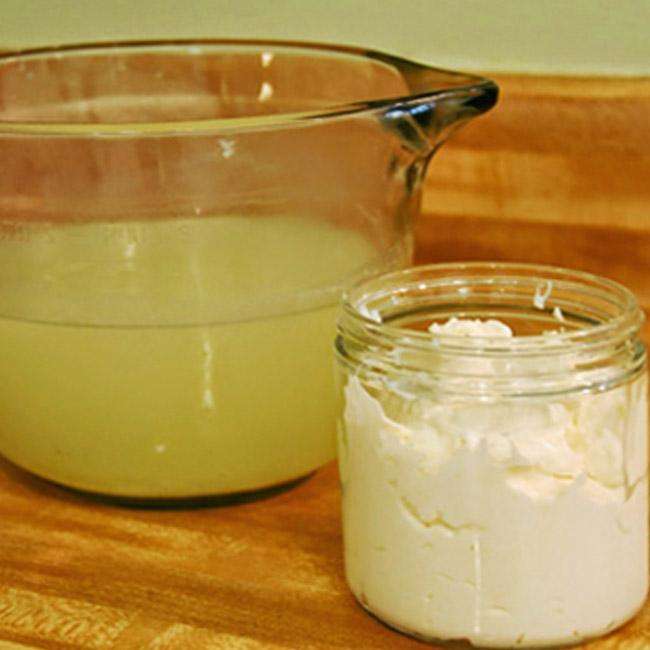
What is kefir whey?
Whey is a by-product liquid extracted from making yogurt, cheese, and kefir cheese. The whey from kefir cheese is made of proteins, water, and lactose. Its taste depends on how the cheese is made. However, it is usually sweet, low in lactose and fat, and very acidic.
How to use kefir whey
Kefir whey is a nutritious extract that you can add to any liquid base, whether it’s soup or smoothie. Most kefir lovers use it for the following:
- Smoothies or fruit juices.
- Soup base.
- Substitute for chicken or vegetable broth.
- Soak for grains like oats, quinoa, and rice.
- Added nutrients for breakfast yogurt or oatmeal.
Kefir lovers usually soak their grains, in kefir whey overnight to help break down excess sugars in the grains. This process helps reduce the carb content of the grains and makes them more gut-friendly. This happens because the probiotics in whey predigest or eat up the sugar in the grain so your gut will do less work.
Health benefits of kefir cheese and whey
Kefir cheese and its whey are packed with nutrients that are developed from the fermentation process and due to the raw materials used. Here are some of the nutrients that your body will enjoy in every spoonful of kefir cheese:
- Boost brain, nerve, and heart health: Kefir cheese is rich in vitamin B12, which plays an essential role in keeping your nerves active and healthy and boosts your brain function. It binds with protein in the digestive system so it can be easily absorbed by the body.
Vitamin B12 helps break down the protein called homocysteine, which contributes to the development of heart disease and stroke. The same protein is also found to cause brain degenerative conditions, like Alzheimer’s and dementia, commonly found in the elderly. - Enhances muscle and bone growth and repair: Kefir and whey are rich in amino acids and protein, contributing to the optimal formation and repair of muscle and bones. As we age, our muscles and bones start to decrease in size. Nutrient-rich food sources like kefir cheese can help slow down the decline of our muscles and bones and prevent musculoskeletal conditions.
- Boost immune health: Kefir has 30 probiotics, which is three times more than the ones found in yogurt. Probiotics improve the balance in the gut and help contain and prevent bad bacteria from causing diseases.
Probiotics are also effective in easing digestive conditions and reducing inflammation in the gut caused by pathogens and bad bacteria.
Frequently Asked Questions (FAQs)
Why does milk kefir form curds?
Casein found in milk binds with proteins as the kefir environment becomes acidic. So the longer you ferment your kefir, the more curds will form and the separation from the whey can become more evident.
How long does it take to make kefir cheese and whey?
The duration of the process depends if you will start by creating kefir or you will use a store-bought one. If you have a ready-made kefir, it only takes 24 hours to extract the cheese. However, if you will make kefir from scratch you’ll need around 48 hours or two days to filter out the cheese.
In some cases, fermenters prolong the straining of the kefir to make the cheese creamier, which can take around 54 to 60 hours.
What is the best way to store kefir cheese and whey?
The best way to store kefir cheese is to place it in an airtight jar with a label that includes the date when it is made. Avoid contamination by using a clean spoon when scooping out the cheese. Lastly, consume it within a week or two once opened.
Are there any special tips or tricks for making kefir cheese and whey?
The best tip to make kefir cheese is to choose the milk for the kefir wisely. Otherwise, the fermentation process can be compromised and lead to bland kefir or inactive kefir grains. The containers should be glass and sterilized to prevent contamination and rapid spoilage.
